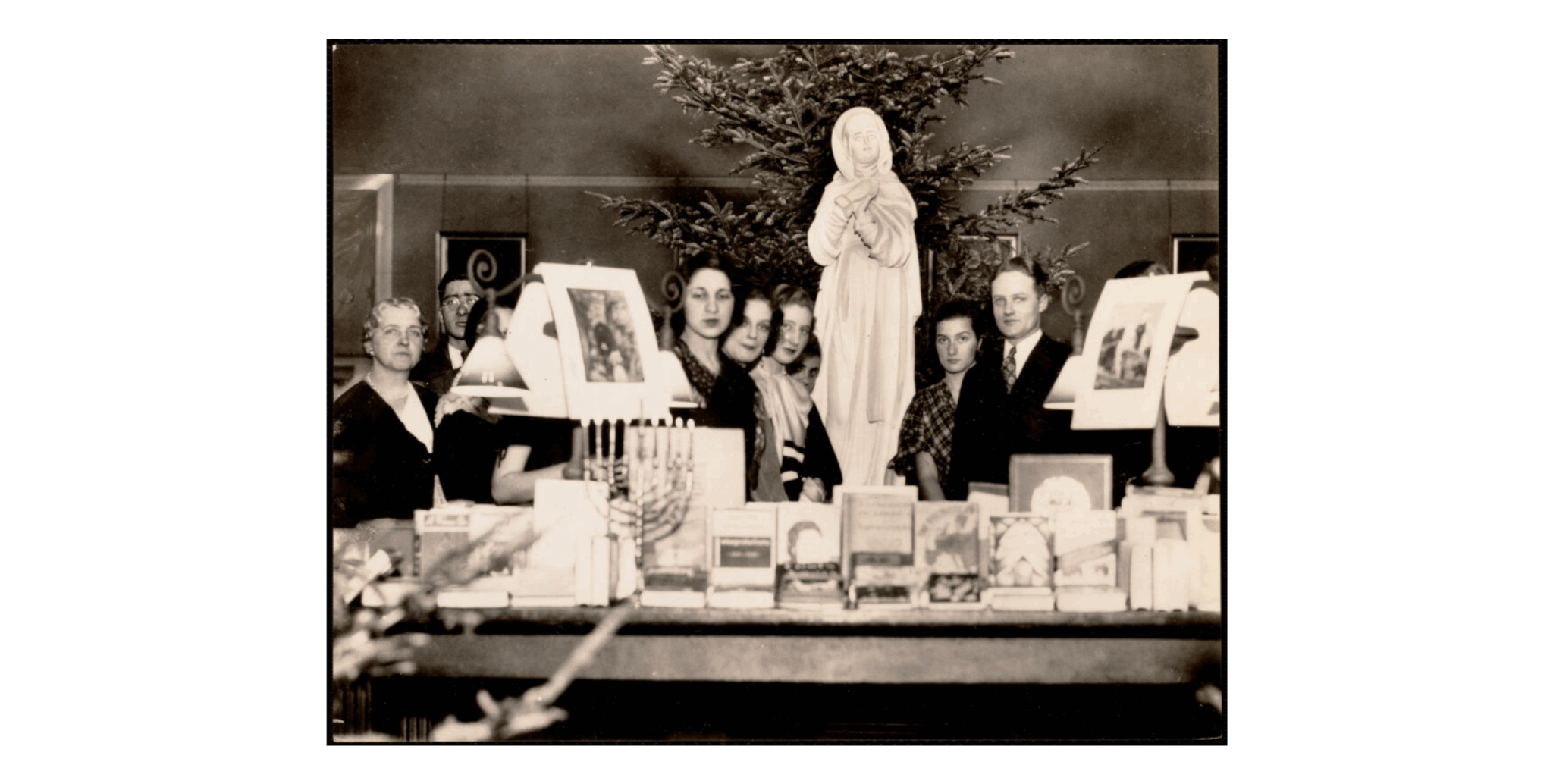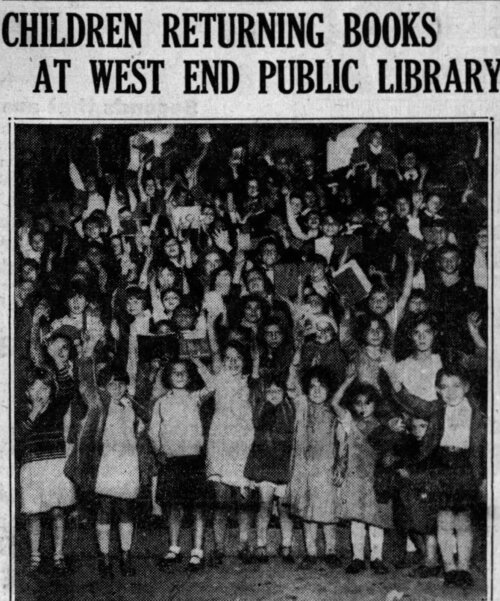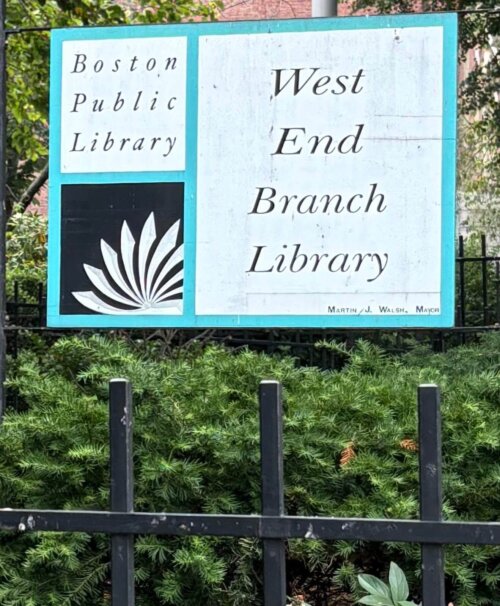The West End Branch of the Boston Public Library
Library service in the West End neighborhood began in 1896 in the Old West Church on the corner of Cambridge and Lynde Streets. The branch remained there until 1960 when the West End Redevelopment Project forced its closure. In 1968 the current library building opened at 151 Cambridge Street. Today, the West End library branch continues to be a beloved neighborhood resource and a plan is under review for a new, larger library to be built along with 119 units of housing.
Library service in the West End neighborhood began on February 8, 1896, when the Old West Church on the corner of Cambridge and Lynde Streets was converted for library use. The Old West Church was established in 1737, and the existing building was constructed in 1806. When the church disbanded in 1887, the building was brought by Andrew Wheelwright to prevent its demolition. Wheelwright sold the building to the city in 1894 for $55,000 to create a library branch long desired by residents of the West End.
When the library opened in 1896, George Washington Forbes became one of its first librarians and the first Black librarian to work in the Boston Public Library system. He was a journalist, civil rights advocate, and scholar who founded the Boston Guardian with William Monroe Trotter while serving the growing neighborhood population.
In 1899, librarians from the West End branch worked with teachers from the Phillips School on Anderson Street and the Bowdoin School on Myrtle Street to provide students with study space and resources unavailable to them in the classroom. The branch soon became invaluable to neighborhood residents and offered classes in American history, English, and homemaking. The library hosted holiday celebrations and put on exhibits showcasing the cultural heritage of many West Enders.
George Forbes was still reference librarian in 1922 when Fanny Goldstein was appointed head of the branch, the first Jewish woman to direct a library in Massachusetts.
Goldstein had a huge impact on the branch and the BPL system as a whole. She created exhibits and events that promoted the literature of the various nationalities of the community of the West End and dedicated time to the collection and display of West End history and the works of neighborhood artists and writers. She and her colleagues compiled the state’s second-largest collection of Judaica, and founded National Jewish Book Month. In the late 1930s the branch temporarily moved to 172 Cambridge Street.
Goldstein was preparing for her retirement in 1957 when the library hosted the first public hearings for the West End redevelopment project headed by the Boston Redevelopment Authority. Though the Old West Church was saved, the West End library closed on April 15, 1960 despite protests led by City Counselor Christoper Iannella and picketing by residents. The building continued to be a voting location and was where, on November 8, 1960, John F. Kennedy cast his ballot for president.
The building was again a church by 1962. The West End community was served by a bookmobile. Plans for a new library were shared in June, 1962; however, bids far exceeded the budget and it took six years for the new branch to be built.
The building that finally opened in 1968 at 151 Cambridge Street was designed by architect Eugene Kennedy of Maginnis, Walsh, and Kennedy. It was described in the Boston Globe as a one-story hexagonal building with space for over 20,000 volumes. It had three air conditioned sound-proofed areas – one each for adults, young adults, and children. Also included were an all purpose room with ample seating, a small smoking area, and the innovation of a “television-record player.”
In the 1970s the branch became known for its “Cinema at Seven” film series, which showed weekly documentary, comedy, classic, travel, and experimental films. It was common for over seventy patrons to come and enjoy a free show on a weeknight. In the 1980s the weekly films continued and there were several lecture series such as “Beacon Hill Authors”, “Know Your Neighborhood”, and “The West End that Was”. The library continued its film and lecture series and began offering computer literacy classes in the 1990s.
Today, the library is just as much of an asset to the neighborhood. It serves a diverse population and has many weekly offerings including exercise classes and film discussions, storytime and tech appointments.
In 2021 the City of Boston began the planning process for the redevelopment of 151 Cambridge Street. The plans include a new two-story library branch, 119 income-restricted units of housing above the library, and a proposed outdoor plaza between the library and neighboring Otis House.
Article by Janelle Smart, edited by Jaydie Halperin
Sources:
The Boston Globe, Sun, Oct 15, 1899 · Page 40, Mon, Dec 24, 1928 · Page 2, Tue, Oct 18, 1932 · Page 1, Sat, Nov 16, 1957 · Page 1, Thu, Apr 7, 1960 · Page 1, Mon, Apr 11, 1960 · Page 13, Tue, Nov 08, 1960 ·Page 1, 4, Sun, Jun 17, 1962 · Page 54, Wed, Jan 18, 1967 · Page 6, Mon, Aug 2, 1971 · Page 3; City of Boston Planning Department ; Boston Civic Design Commission, “Monthly Meeting 151 Cambridge Street, ‘West End Library’ Final Presentation” , “February 12, 2025, West End Library presentation”; Boston Public Library, Digital Commonwealth Collections, Interview with West End Branch librarian; The West End Museum, “George Washington Forbes”, “Fanny Goldstein”.















